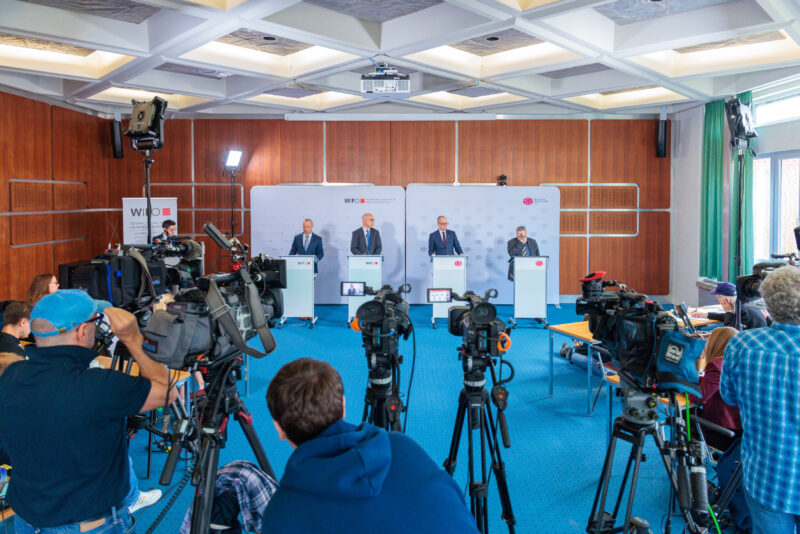
Corona Crisis: Impact on Vienna's Economy
The aim was to identify possible specifics of the Viennese economy regarding the economic consequences of the current phase of the COVID 19 crisis compared to Austria. In summary, the core results of the short analysis can be outlined as follows:
-
In spite of considerable structural differences to Austria, Vienna shows an overall similar degree of economic impact in the current phase of the crisis.
-
It is true that a slightly higher proportion of the Viennese city economy's regional workforce is employed in unaffected industry groups. At the same time, however, the share of employees is also marginally higher in industry groups that are unable or barely able to carry out their business activities due to the restrictions currently in force and are therefore strongly or very strongly affected by the crisis.
-
According to the results, in the current phase of the COVID 19 crisis, industry groups with more than two thirds of the Viennese workforce are at least significantly affected by its economic consequences. Thus, horizontal measures with a broad sectoral impact will probably be preferable in the current situation to selective measures to support specific sectors.
-
According to the available results, the risk of supply-side production disruptions due to COVID-19-related labour shortages is significantly lower in Vienna than in Austria but remains considerable in the city economy as well.
-
Higher employment shares in industry groups with at best a moderate risk of default are accompanied in Vienna by significantly lower shares in industries with a high or very high risk of production disruptions due to COVID-19-related labour shortages.This is primarily due to the lack of specialisation in Vienna in large parts of the manufacturing sector with its need for workers to be present at the production site.
-
Even in Vienna, however, industry groups with more than half of the regional workforce are very sensitive to potential labour shortages. Therefore, the risk of production disruptions due to COVID-19-related labour shortages is virulent here as well.
Publications
- Julia Bachtrögler
- Matthias Firgo
- Oliver Fritz
- Michael Klien
- Peter Mayerhofer
- Philipp Piribauer
- Gerhard Streicher























